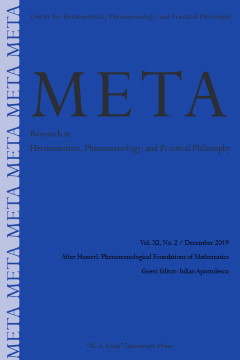How does mathematics get into science, and why?
a Husserlian perspective
pp. 323-357
Abstract
In this paper, I present, first, a categorization of the many uses mathematics has in science as a methodological tool. I identify four: representative, instrumental, predictive and heuristic. I introduce the issue in a historical context, discussing it more systematically afterwards. My approach is Husserlian thoroughly, which means that I hold the following views: 1) real nature is perceptual nature, constituted out of the hyletic material of the senses by the action of built-in psychophysical proto-intentional systems; 2) mathematized nature is an intentional construct devised for methodological purposes; it instantiates idealizations of formal-abstract structures of perceptual nature, but can also incorporate non-representing (imaginary) elements; 3) mathematics serves science by offering contexts of representation of perceptual reality and instruments of theoretical investigation of mathematical substitutes of reality. I conclude by contrasting my approach with Husserl’s own.
Publication details
Published in:
Apostolescu Iulian (2019) After Husserl. Meta 11 (2).
Pages: 323-357
Full citation:
Da Silva Jairo José (2019) „How does mathematics get into science, and why?: a Husserlian perspective“. Meta 11 (2), 323–357.


